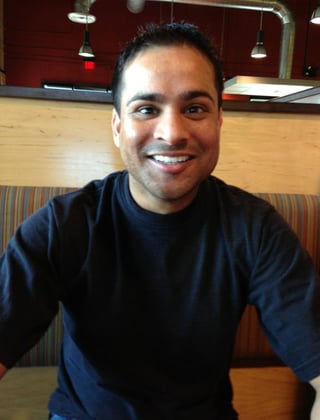UMHS third-year student Rupendra Ghatak just had a case report on drug-induced pancreatitis in the differential diagnosis of acute pancreatitis published on July 28, 2017 in the prestigious American Journal of Case Reports. Mr. Ghatak was published as first author, with two interns and an attending physician from Crittenton Hospital Medical Center in Michigan.
Mr. Ghatak started working on the report during his core Internal Medicine rotation at UMHS after he and a doctor saw a patient as a consult in the emergency room at Crittenton Hospital. He said doctors mentioned the case would be a good one to write about.
The UMHS Endeavour spoke to Mr. Ghatak about the report, what he learned from the experience and the challenges involved. He stressed that clinical research is one of the “fundamental cornerstones of medicine.” The Endeavour caught up with Mr. Ghatak to discuss why reports and research are such a crucial element of medical education.
UMHS Endeavour: Tell us how you started working on the case report as first author with two interns and an attending from Crittenton Hospital and what it's about.
Rupendra Ghatak: The case report is about informing and guiding other providers about stressing the importance of drug-induced pancreatitis in the differential diagnosis of acute pancreatitis. Dr. Lina Masso, Dr. Daniel Kapadia, Dr. Zain Kulairi and I started working on this case report during my core Internal Medicine rotation at the Wayne State program in Crittenton Hospital. Dr. Masso and I initially saw the patient as a consult in the emergency room. Dr. Kulairi (core Internal Medicine faculty) had mentioned how it would be an interesting case to write about, and we had numerous discussions before we decided to move forward with writing the case study. Once we got all our facts in place, we knew we had something interesting and substantial to report.
What was one of the most significant things you learned from doing the case report?
Clinical case reports are typically a medical student’s first entrance into research and publications. It is a way to exchange information from a firsthand clinical experience to generate more information for medical research and evidence-based medicine. One of the most significant things that I have learned is that doing a case report is a long but rewarding process. It is also important to note that there are many predatory journals that will accept your publication for a nominal fee. One may be tempted to publish just to claim that they have a publication. I can be reached anytime to talk further about the importance of publishing in journals with proper indexing.
What were some of the challenges involved with doing the case report?
One of the challenges we faced was the research behind the case. During the peer-review process, you will find many different opinions from various reviewers. Everyone has an opinion and it is important to choose how you will integrate his or her thoughts into your manuscript. The biggest challenge was the arrangement of the case report and what you want to convey to your readers. We wanted to communicate how and why we worked up the patient, the mechanism of action of furosemide-induced pancreatitis, and how to prove drug-induced pancreatitis.
What should current and prospective UMHS students know about the importance of doing reports and research?
Clinical research is one of the fundamental cornerstones of medicine. What we see in the hospital or outpatient is critical to document, so others may learn from our patients. Clinical case reports are a great way to make your voice heard, especially if it is indexed properly because then reputable researchers are able to cite your manuscript without any reservations. It may be a plus on your CV, but the true reward comes from knowing you have contributed to medicine on an international level.
Is there anything else you'd like to add?
We would like to thank President Ross and the entire UMHS family for their generous donation to this project. Thank you to Dr. Zain Kulairi; without your guidance, this project would not have been possible. To Dr. Lina Masso and Dr. Daniel Kapadia, you two already know how much you mean to me; love you guys floor team three represent!
Read the full article in the American Journal of Case Reports by clicking this link.
(Top photo): UMHS third-year student Rupendra Ghatak had a case report on drug-induced pancreatitis in the differential diagnosis of acute pancreatitis published in the prestigious American Journal of Case Reports. Mr. Ghatak was published as first author, with two interns and an attending physician from Crittenton Hospital Medical Center in MI. Photo: Courtesy of Rupendra Ghatak
About UMHS:
Built in the tradition of the best US universities, the University of Medicine and Health Sciences focuses on individual student attention, maintaining small class sizes and recruiting high-quality faculty. We call this unique approach, “personalized medical education,” and it’s what has led to our unprecedented 96% student retention rate, and outstanding residency placements across the US and Canada. UMHS is challenging everything you thought you knew about Caribbean medical schools.

Scott is Director of Digital Content & Alumni Communications Liaison at UMHS and editor of the UMHS Endeavour blog. When he's not writing about UMHS students, faculty, events, public health, alumni and UMHS research, he writes and edits Broadway theater reviews for a website he publishes in New York City, StageZine.com.
















